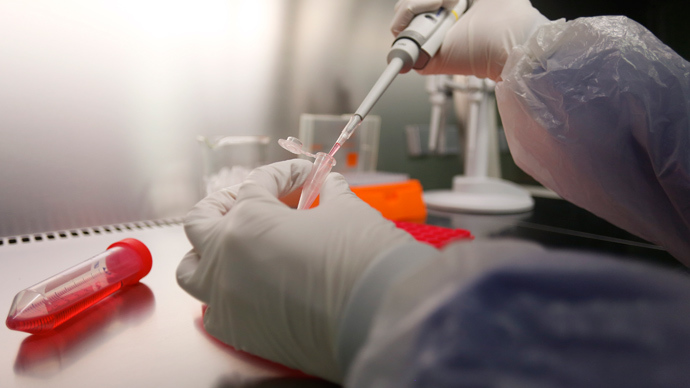One step closer to artificial intelligence: Scientists create cells replicating human brain processes

Australian scientists have for the first time developed an electronic long-term memory cell that mimics the work of a human brain. Researchers say the discovery is a step towards creating a bionic brain.
Researchers from the Royal Melbourne Institute of Technology (RMIT) have created the world’s first electronic multi-state memory cell which mirrors the brain’s ability to simultaneously process and store multiple strands of information, according to the university’s press-release.
The groundbreaking discovery was recently published in the materials science journal Advanced Functional Materials.
The device which is 10,000 times thinner than a human hair is a “vital step towards creating a bionic brain,” the scientists said.
“This is the closest we have come to creating a brain-like system with memory that learns and stores analog information and is quick at retrieving this stored information,” said project leader and co-leader of the RMIT Functional Materials and Microsystems Research Group, Dr Sharath Sriram.
READ MORE: Revolutionary: Russian man to undergo first head-to-body transplant
The lead author of the study Dr Hussein Nili, said that the device is major step in recreating the human brain.
“This new discovery is significant as it allows the multi-state cell to store and process information in the very same way that the brain does,” he said.
“Think of an old camera which could only take pictures in black and white. The same analogy applies here, rather than just black and white memories we now have memories in full color with shade, light and texture, it is a major step.”
He explained that current devices store data only in binary sequences, however the new nano cell can store information in multiple states because its analogue.
“While these new devices are able to store much more information than conventional digital memories (which store just 0s and 1s), it is their brain-like ability to remember and retain previous information that is exciting,” he said.
The mechanism of the new device is based on a previous discovery made by RMIT researchers last year where they created a nanometer-thin stacked memory structure using a thin film from a functional oxide material.
READ MORE: First head transplant possible within two years, says Italian ‘Frankensurgeon’
“We have now introduced controlled faults or defects in the oxide material along with the addition of metallic atoms, which unleashes the full potential of the ‘memristive’ effect – where the memory element's behavior is dependent on its past experiences,” Dr Nili said.
He said that eventually the creation of a bionic brain will allow scientists to help find cures for various neurological diseases.
“If you can replicate a brain structure outside a human body, you can get more insights into the functionality of a mammalian or human brain in terms of the kind of disorders that human brains develop, like Parkinson or Alzheimer's disease,” he told the Australian Broadcasting Corporation (ABC) on Tuesday.
The new electronic cell could also help to create artificial intelligence, said co-author Dr Sumeet Walia.
“Once we are capable of storing and remembering and recalling the past events, from there we can actually start working on developing it as a storage component for full area of artificial intelligence networks. For example robots, or even computers that behave like a human brain," Walia told ABC.












